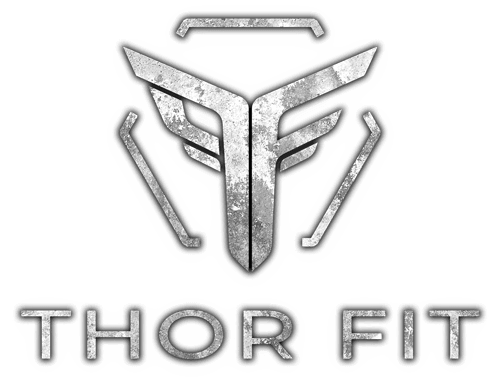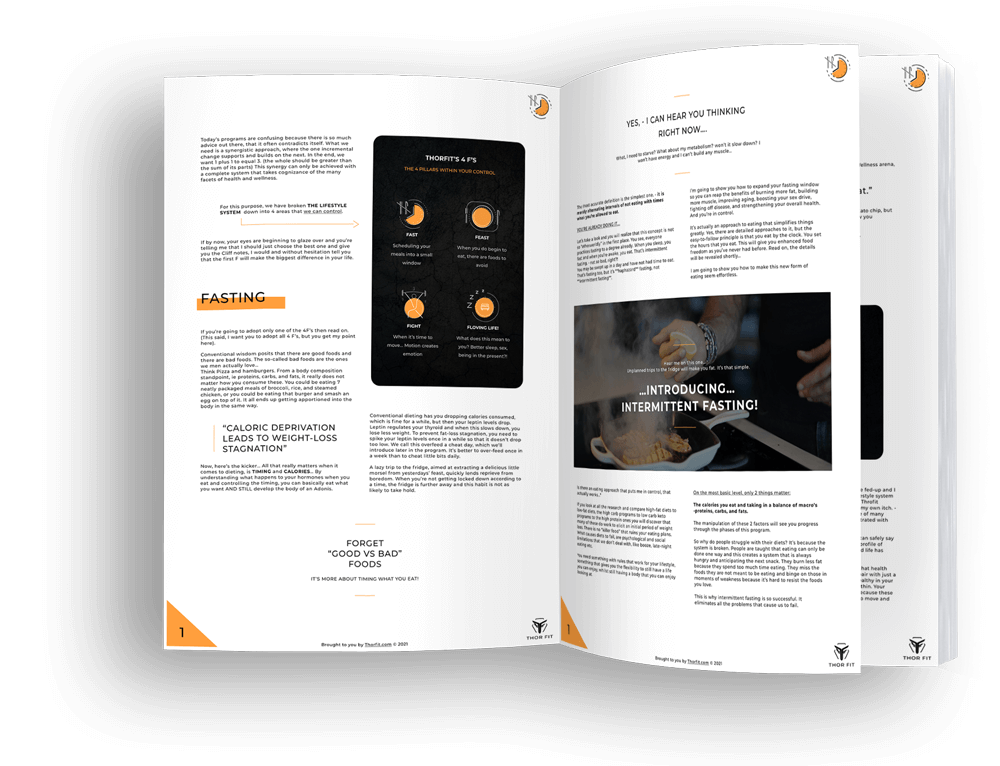Happy and Healthy Monday to you. You’re now entering the last week of the first phase. By now, you should be in the habit of tracking your food intake, and developing a decent understanding of the caloric density of the foods you’re ingesting. We all think that we eat many different dishes when in actual fact, we gravitate towards a fairly small set of different foods. You will be getting used to eating similar, but “good-for-you” types of food, and the tracking will become easier.
Fasting
The beauty about fasting is that you actually don’t need to worry about anything, except NOT eating during your prescribed 16/8 fasting window. Less is more when it comes to fasting. Of course there are certain foods and supplements you can take, which don’t activate your metabolism and are within the fasting parameters, but I want you to get used to not eating when you’re not supposed to be eating. Stick with this, your body will thank you for finally allowing it to do some housekeeping, like getting rid of dead cells in your body etc (autophagy)
Feasting
If you’ve been religious about the prescribed amount of carbs you’re allowed to have (see week 3) then you’re well on your way to becoming insulin sensitive again. It’s time to re-introduce Carbs, because they’re an integral part of any diet, and provide your with the glycogen your muscles need to do the work.
CARBOHYDRATES During this, your final week pf phase 1, you get a whopping 100grms. This will allow you to have both, a post-workout shake (to be consumed within half an hour of the end of your workout) as well as a secondary source of carbs. You’ve earned it… Enjoy!
PROTEIN – We still stick to the previous week’s formula. You consume .8 grams of Protein on workout days (per lb of bodyweight).
FAT – As with the first 2 weeks, the FAT allowance is derived from the total amount of calories you have consumed from CARBS and PROTEINS, – Once deducted from your total allowance, there’s a marginal reduction in the amount of fat you can consume. This translates to about 200 calories less from last week’s fat allowance. Remember that a higher carb allowance will reduce the overall fat allowance. If you’re using MyPlate and are entering your food intake, then a rule of thumb is to be around 500 calories in deficit after all the energy expenditure and food intake have been balanced by the program.
Fighting / Training
Your PHASE 1 TRAINING SCHEDULE still applies. You train on Monday (Workout 4) Tuesday (Workout 3) Wednesday (Rest) Thursday (Workout 2) Friday (Workout 1) Saturday and Sunday (rest) You should be beginning to feel comfortable in the gym or your chosen exercises and should know what to do with the prescribed exercises. We want you to rather do a few movements well, than to be capable at hundreds of carrying movements, non of which you can really call “perfected” TRAINING AND NUTRIENT TIMING. You’ll be eating the carbs later in the day in order to maximise the effects of your naturally higher insulin sensitivity. On Non-workout days, have your carbs 3 to 4 hours before you go to bed. (10pm bedtime means that you have those at 6pm) On workout days, you have your carbs after your workout. Your first meal of the day should consist of protein and fat and should ideally be consumed about 3 hours before your workout. Your next meal should be straight after the workout and all the allotted carbs should be eaten then.
Let’s chat about hunger and metabolic slowdown
Do you know Ghrelin?
Do you know Ghrelin?
I asked twice because I could imagine your head tilting sideways in a non-plussed manner. — I also know that I knew nothing about this little hormone until it became impossible not to know about it.
You see, if you get hungry today, it’s probably that little Ghrelin Gremlin who is creating some havoc in your system…
Ghrelin is produced in the brain, kidneys and pituitary gland. — when it’s made in the system, it means one thing…. “Snack attack”
Ghrelin both induces hunger and is produced by it. Your stomach produced it when it’s empty and it makes you feel hungry. They call it a TRAINABLE hormone because it will follow your eating schedule. When your system knows its time to feed, then you begin to produce it.
The less frequently you eat, the less chance Ghrelin gets to turn your tummy into its personal playground. You’ve probably seen bodybuilders who subscribe to eating at least 6 small meals a day. — believe me, you do not want to copy these poor hungry souls. — The moment one meal has passed into their systems, they get hungry for the next meal.
Research published in the American Journal of Human Biology found a direct link between a lack of sleep, overeating, and obesity. Many people think the reason less sleep leads to more eating is that when you sleep less, you’re awake longer; the more hours you’re up, the more time you have to eat.
The real reason is that a lack of sleep impacts hormone levels and brain functioning in a way that pushes you toward more foods — and in particular the crap you should avoid. It’s a three-pronged attack designed to make you fat.
When you don’t sleep enough:
- Cortisol levels rise, which activates reward centers in your brain that make you crave food.
- You produce more ghrelin and it’s harder to decrease the levels, meaning you feel hungry all the freaking time.
- The lack of sleep and higher levels of ghrelin appear to make you more likely to grab for dessert foods and fattening sugary snacks. While cheat foods will have their place, the goal is for you to eat them when you want — not because your brain creates a desire that you can’t resist. But that’s exactly what happens when you don’t get enough sleep. When researchers from Columbia University used MRI testing on sleep-deprived participants, they found that the areas of the brain that desire junk food was more activated with less than six hours of sleep.
Here’s how to prevent high ghrelin:
- Ensure enough sleep.
- Avoid eating too much sugar.
- Don’t eat too often.
- Eat more protein.
- Practice intermittent fasting.
SLEEP
Before you lie in a tub of Melatonin or get prescription medicines, try using this aide to the Zzz’s.
My go-to tranquilizer beverage is simple:
2 tablespoons of apple cider vinegar (I use Bragg brand) and 1 tablespoon honey, stirred into 1 cup of hot water.
I learned this from the late and great Seth Roberts, PhD. Some of his readers also noticed large and immediate strength improvements in exercise after a few days of using this pre-bed cocktail.

I learned this from the late and great Seth Roberts, PhD. Some of his readers also noticed large and immediate strength improvements in exercise after a few days of using this pre-bed cocktail.
And Finally, if the road ahead looks a little daunting from a food perspective, I encourage you to take heart. This is the last week of phase 1. I have a little carrot to wave in front of you. Actually it’s a rather large carrot. You see, you’re re-acquainting yourself with carbs and that’s a great thing. You have however been on a bit of a starvation diet as far as carbs go. – Not extreme, but the body is beginning to say…hey maybe we should be saving some of this food for what clearly looks like “winter is coming”
It’s also referred to as metabolic slowdown and means that you body can resort to saving some of the food you eat. This is why it’s so hard to lose the last few Kg’s of a weight cut. The first Kg’s are easy, but maintining the loss can be a challenge. We combat this with an over-feed.
Tomorrow, I’m going to explain to you why the next phase will include a planned over-feed during which you can basically eat whatever you want. Not only does this lend a bit of emotional reprieve from the dieting mindset, but it will also reset your body’s orientation to the caloric deprivation schedule that you’ve been enduring.
Besides, – what’s not to love about eating anything you want for a day…
We will look at the Cheat day in greater detail tomorrow.
For now, I wish you a beautiful Monday.


